previous page: Outer Banks, NC
Chincoteague, VA
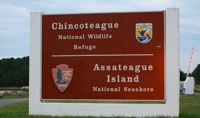
Chincoteague National
Wildlife Refuge has long been one of my most favorite birding spots;
returning to this place after an absence of almost ten years brought
back many excellent memories...
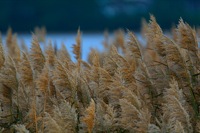

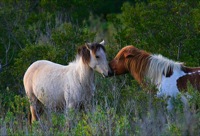
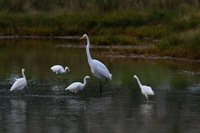
A number of surprises were in store for me here, though with better
weather I
would probably have been better able to capture these with the camera.
The first was the pair of Merlins which I found perched (in separate
locations) near the central water impoundment:
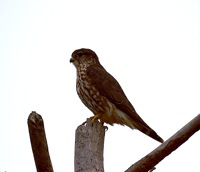
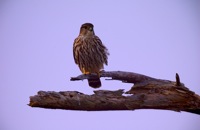
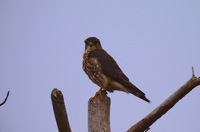
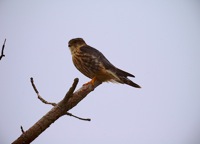
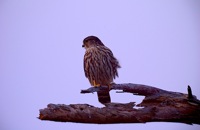
These Merlin photos were taken using the Orion telescope, which was
hand-held (!) while sitting in the driver's seat of my car, with the
telescope resting on the window sill. Cloud cover severely limited the
available light, though even at f/12 and without a proper tripod, some
of the images came out reasonably well.
The following evening we (I and the other passers-by) were treated to
an eagle at close range:
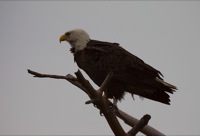
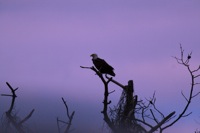
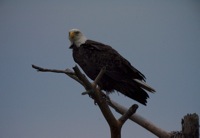
The extremely poor lighting again made for a very challenging shoot;
the eagle photos were thus less than ideal.
Perhaps even more exciting (for me) than the merlin and the eagle were
the Black Skimmers who made a brief appearance on the morning of the
third day, shortly before I left for the next site on my tour:
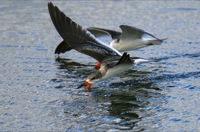
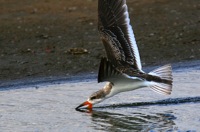
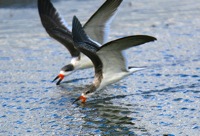
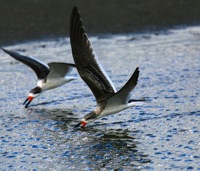
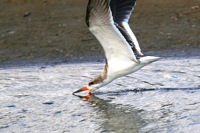
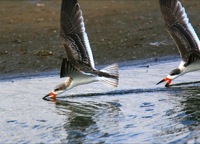
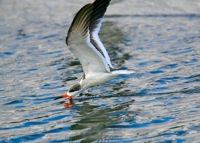
Notice how the skimmer's lower mandible is longer than the upper beak,
and is kept submerged below the water as the bird "skims" along the
surface in search of prey. Whenever the bird feels a prey item strike
its lower mandible it snaps back the head and quickly closes the beak
on the victim. Truly a remarkable product of evolution.
A few American Avocets (in non-breeding plumage) and Coots were present:
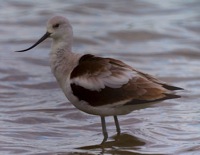
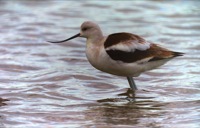
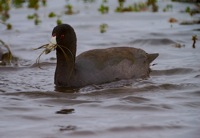
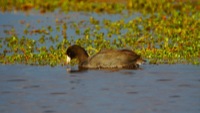
Cormorants were quite common in the narrow channels bordering the road
which runs through the refuge:
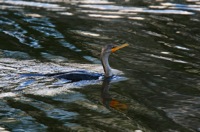
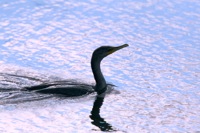
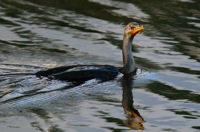
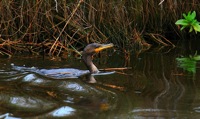
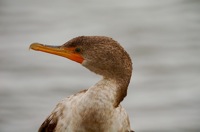
This cute little fellow, a Pied-billed Grebe, was found diving in the
interior impoundment:
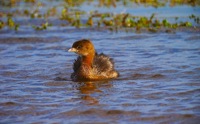
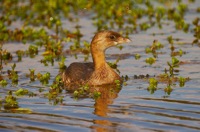
Willets and Godwits were much rarer here than at Pea Island, though I
didn't check the beach:
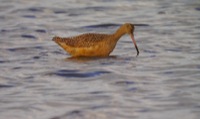

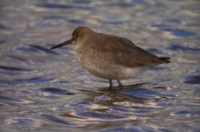
Chincoteague is well-known for its "wild" ponies:
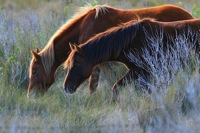
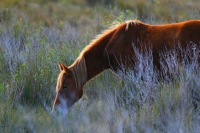
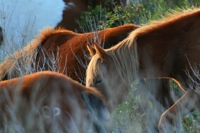
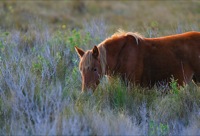
The most common animal, however, was the egret, of which three species
were observed: the Great Egret, the Snowy Egret, and the Cattle Egret.
The Great Egret is the largest of the three:
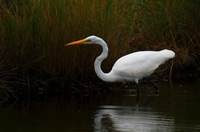
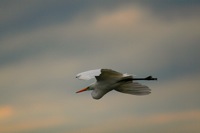
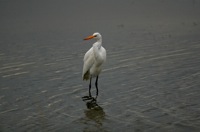
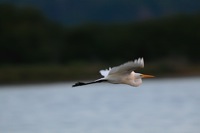
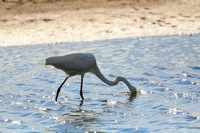
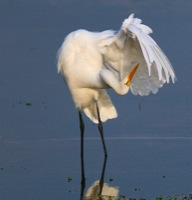
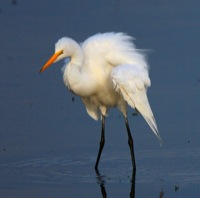
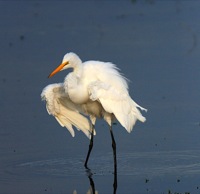
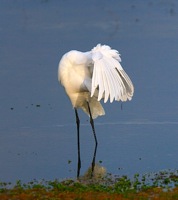
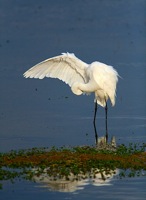
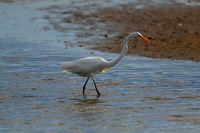
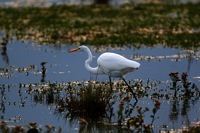
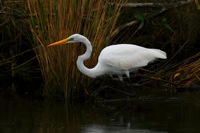
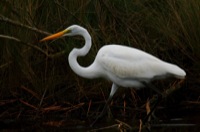
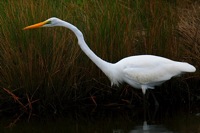
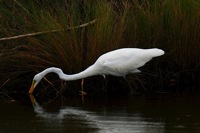
The Cattle Egret is rather smaller, having both shorter legs and a
shorter beak:
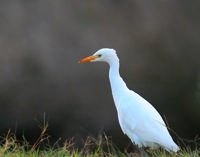
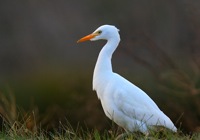
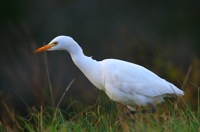
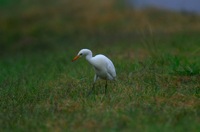
The Snowy Egret is roughly the same size as the Cattle Egret, but has a
dark beak (and yellow feet):
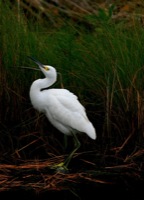
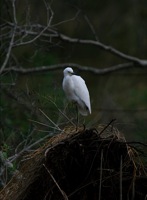
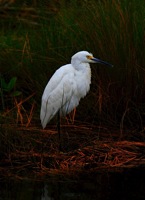
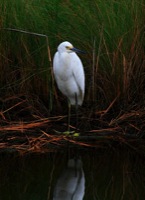
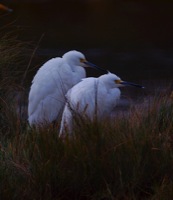
Herons were somewhat rarer than egrets at Chincoteague:
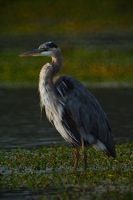
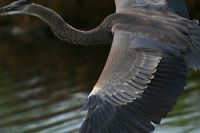
There were quite a number of gulls near the inlet, and a smaller number
near the impoundment; many were seen dining on crabs:
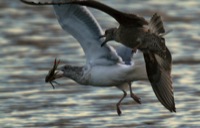
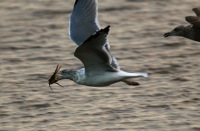
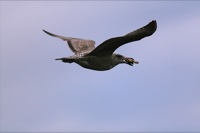
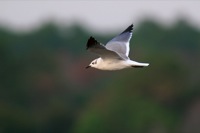
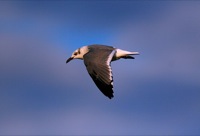
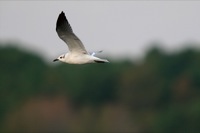
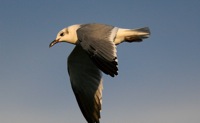
I had hoped to get some good photos of Yellowlegs, but was only able to
get the following marginal images:
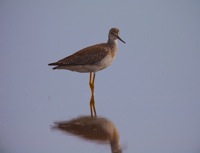
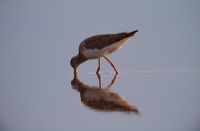
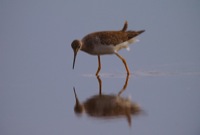
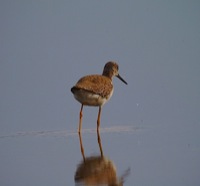
This female Kingfisher made an appearance shortly before dark; I had to
increase the exposure to counteract the low light, and this resulted in
some image blur due to camera shake:
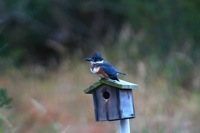
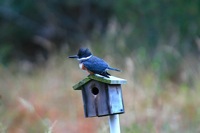
The full
photo album for this site is HERE.
next page: Bombay Hook, DE













































































